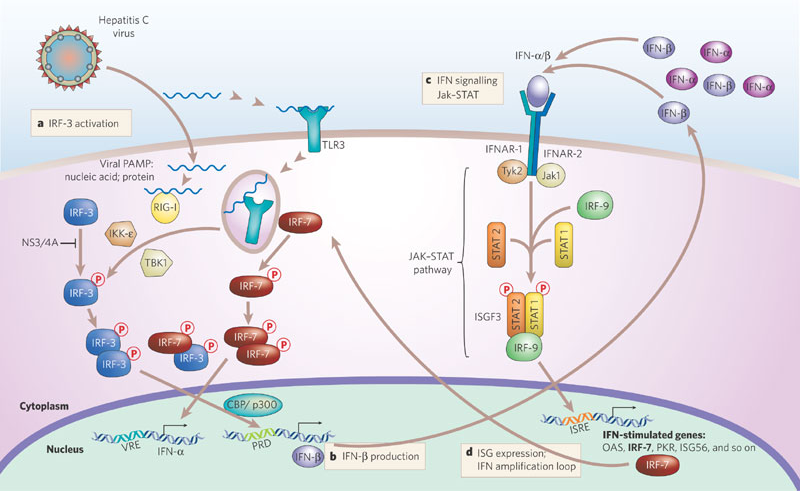Virus infection of mammalian cells triggers an intracellular immune response, termed the “innate immune response” that functions to suppress replication and spread of the virus. During infection specific motifs within viral products are recognized as pathogen associated molecular patterns (PAMPs) by cellular factors called pathogen recognition receptors (PRRs). Studies in the Gale laboratory have defined the retinoic acid-inducible gene I (RIG-I) as the major PRR that triggers immunity against hepatitis C virus. Accumulating evidence now indicates that immunity against RNA viruses is largely triggered through the PRR actions of RIG-I and/or a related protein called MDA5. RIG-I and MDA5 are cytosolic RNA helicase and are expressed at a low levels in most cells. During virus infection RIG-I or MDA5 binds to RNA PAMP motifs of viral genome or replication product RNA generated by specific viruses. RIG-I binding of viral RNA triggers its downstream signaling to induce the activation of latent transcription factors and the eventual production of alpha/beta interferons and expression of interferon-stimulated genes. These processes induce the innate immune response that serves to limit virus replication and spread. Many viruses direct actions of immune evasion through regulation of innate immune signaling and function. Our studies have linked the course of virus infection to regulation of innate immune processes, and have identified novel interactions as therapeutic targets for the intervention of infection.
Innate Immune signaling by RNA viruses
Studies in this project are focused on understanding the molecular interactions of virus and host that confer non-self discrimination of viral nucleic acid, and that trigger and control innate antiviral immunity

Innate Immune signaling by RNA viruses. Michael Gale Jr. et al. (2005) Nature 436: 939-940

